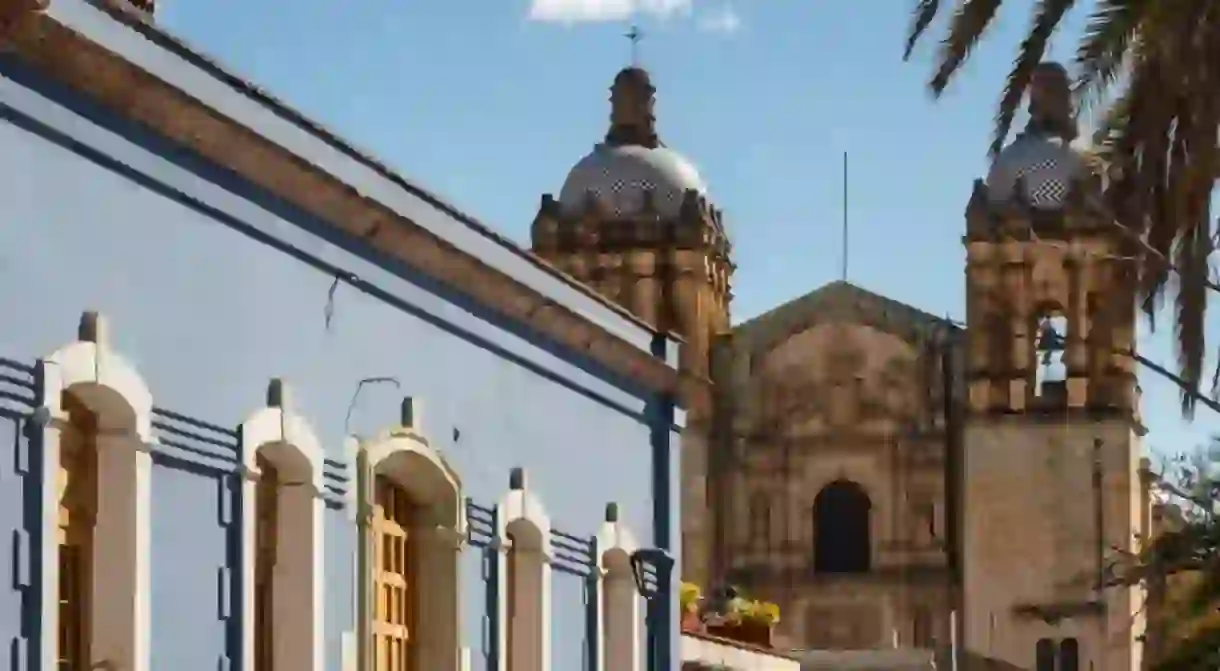11 Epic Places in Oaxaca, Mexico You Never Knew Existed

Oaxaca is one of the most magical places in Mexico, delicious food, ancient culture and mind-altering mezcal all await the intrepid traveler looking to explore. But there are other sights to see beside Monte Alban and Oaxaca City, here are a few of our must-visits for your next trip.
Glow-in-the-dark adventures
Hidden from the rest of civiliazation inside a national park and bordered by the Pacific ocean and a lagoon, the tiny town of Chacahua hides its own special secret – the Lagunas de Chacahua. By day they are just waves quietly lapping against the shoreline, but by night the water dances with the light of millions of dinoflagellates (plankton) whose movement in the water causes them to sparkle in a blue luminescence. There’s no Instagraming this, you have to live it to believe it.

Tunneling under the city
Under the streets of Oaxaca City there are over 40 different networks of secret tunnels and passageways built by Dominican friars and monks. The tunels connect the majority of the city’s churches and chapels, along with the central government buildings. They are believed to have been used during both Independence and Revolutionary times for church and civil leaders to escape public demonstrations and travel quickly throughout the city undetected.
Ancient tree art
Planted over a thousand years ago by Pecocha, a priest of the Aztec wind god, the Tule tree holds court in Santa María de Tule in Oaxaca. While you might be tempted to climb this stout and massive tree, the more interesting pastime is to find images of animals in its trunk, as local school children can point out to you. The Tule tree is not alone however, the town actually has a series of massive and ancient Montezuma Cypress trees, which they are desperately trying to protect against the effects of urbanization and climate change.

River silence
This tiny town in the north of Oaxaca is another incredible location to enjoy the state’s spring-fed rivers and pools. Off the beaten path and out in nature with no phone signal or internet, you can stay in one of the Ecoturism Zuzul’s slightly kitschy but comfortable wooden cabins that sit on stilts above the river and swim in their massive, spring-fed pool. A 20-minute walk from town, you will also find waterfalls and swimming holes.
See the carvers at work
Oaxaca carvings are iconic across Mexico. Some of the region’s most prestigious craftsmanship goes into the carving and painting of creatures both mythical and real. A blanket of tiny dots, strokes and flicks of the wrist create a canvas of color and symbolism on each of these creations. The Taller Jacobo y María Angeles is one of the most well-respected carving workshops in Oaxaca and visit to see them will not only bring you in close contact with the masters at work but with the very spirit of Oaxaca.

Oaxaca’s old world influence
Mexico’s African influence may be well forgotten by many, but the afromestizo culture is still very present in Oaxaca’s Costa Chica, in particular in Jamiltepec and Juquila. The descendents of slaves brought to Mexico by the Spanish to work on plantations, the people of this coastal area are a stunning blend of cultures and physical characteristics. While not much pure African culture has been maintained here, fragments of these groups’ ancestry have been blended into the food, dance, music and traditions of this area, making it one of the most fascinatingly mixed cultures in the country.
Paradise solo
This heart-shaped bay with tranquil sea breezes is only reachable by boats that leave from the beaches of Santa Cruz. Its isolated location means you might just find yourself alone in paradise. Two beaches comprise the bay, the Cacaluta beach and the Arroyo beach, the second drawing many more visitors to its shores. For your beach solitude be sure to take supplies and water, as there’ll only be you and the waves at this place.

Hiking with the cloud people
Mountainous splendor, an isolated people, and the never-ending landscapes of the state of Oaxaca all contained within one place – Sierra Juarez. Along the high mountain roads you will meet the “people of the sky,” the Zapotecas, who conserve their traditional dress, languages and rituals in the face of a ever-changing society. They will lead you into their pine forests and show you some of Oaxaca’s most formidable nature and the people that call it home.

The land between the living and dead
Destroyed by the Spanish because of its religious significance for the Zapotecan people, Mitla is still one of Mexico’s most interesting pre-colombian archeological sites in part because of the intricate geometric mosaics that adorn its buildings created by interlocking pieces of stone – no two walls are the same. The site served as the Zapoteca “Vatican” if you will, home to the culture’s most important priests and was considered a gateway between the dead and living.

A dip in soothing waters
The Atonaltzin Balneario offers a soak in sulfuric waters that bubble naturally from the ground in a perfect turquoise blue. The complex of pools, nature, and stone structures for cooking and sitting is located just outside the tiny town of San Antonio Acutla, Oaxaca. The water stays at 26 degrees Celsius year-round, and the nearby system of waterfalls is particularly impressive during the rainy season when rocks, tree roots and the river form hundreds of tiny waterfalls and pools.
A cultural oasis
Quite possibly one of Oaxaca’s most underrated places to spend a quiet afternoon, the San Pablo Academic and Cultural Center is part of an ancient convent complex built by the Dominican missionaries to the area during colonialization. The center’s library has intimate spaces to work with free wifi, and the San Pablo restaurant overlooking the courtyard has a full calendar of free films, art exhibits, talks and conferences. Aesthetically pleasing and mentally stimulating, it’s an all-in-one package for vacation bliss.














